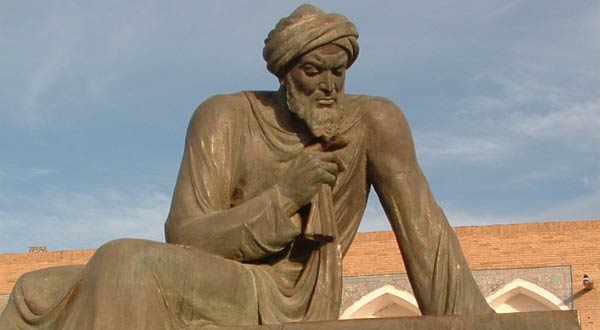PROF IRFAN SHAHID presents a brief introduction of a great Muslim Mathematician of the 8th century who transformed Mathematics from digit to letter and gave a pragmatic dimension to the science of mathematics
The name of al Khwarizmi has become immortal in the history of algebra and algorithm. Algebra derives from the Arabic word aljabr found in the title of his great book on Mathematics, “Aljabar wal Muqabala”, and algorithm originates from his name Al-Khwarizmi. Binary Mathematics used in computer programming is based on the module developed by Al-Khwarizmi.
Al-Khwarizmi was one of the great mathematicians of the world who influenced the development of mathematics more than any other person. He introduced to the Islamic world, and to Europe, the scientific numerals called the ‘Arabic Numerals’ with ten symbols (1, 2, 3….0) and their place value.
Abu Jafar Muhammad Ibn Musa Al-Khwarizmi was born in 180 AH/795 AD in Khwarizmi, which is now known as Khiva in Uzbekistan in Central Asia. He was known As Al-Khwarizmi as he was born in Khwarizmi village. His ancestors were Iranians who had settled down in Khwarizmi long before his birth. He lived during the region of caliphs al-Mamun, al-Mustasim and al-Wathiq.
He studied Indian, Greek and Islamic mathematics and astronomy. He was also well versed in history and geography. After the completion of his studies, he joined the great Scientific Academy Bait Al-Hikmah (House of Wisdom) in Baghdad when he was twenty years old. He spent all his life in Baghdad, working for the science academy, studying mathematics and other subjects, and writing books. Astronomer al-Zawhari, mathematician, Habash al-Hasib and philosopher scientist al-Kindi were his contemporaries. He died in in Baghdad 232 AH/847 C.E.
Al-Khwarizmi wrote on all branches of mathematics, arithmetic, algebra, geometry and trigonometry. He also wrote on astronomy, geography, history music, and astronomical instruments. His book Surat-al-Ardh is devoted to geography, Kitab al-Zij to astronomy, and Kitab al-Tarikh to history.
His most important book Kitab al Mukhtasar fil Hisab al-Jabr Wal-Muqabala (Book of Calculation by Restoration and Balancing) deals with algebra. It is divided in three parts. The first part deals with algebra, the second with measurements and the third with problems of distribution of properties under Islamic law. Following are some of the topics discussed in the book: the basics of algebra; six standard forms of algebraic problems, formulae for their solutions; the four arithmetical operations; addition, subtraction, multiplication, division; area of a triangle, circle, square; volume of cones, pyramids, cubes, etc.
Al-Khwarizmi said that algebra is based on the two processes of al-jabr and that all algebraic equation contains three factors: 1) unknown quantity, 2) the square of the unknown quantity and 3) a number. Al Jabr (restoration) is the process of transferring the negative quantity to the other side of the equation and eliminating it. Al Muqabala (balancing) is uniting the similar quantities from other sides of the equation. He reduces all problems to six standard forms: 1) squares equal to roots: ax3 = bx; 2) squares equal to number: ax2 = c; 3) roots equal to number : ax = c; 4) squares and roots equal to number: ax3 + bx = c; 5) squares and numbers equal to roots: ax2 + c= bx; and 6) squares equal to roots and numbers: ax2 = bx + c. He framed rules to reduce any problem to one of the six standard forms. For example, x2 = 40x – 4×2 is reduced to standard form 1 as 5×3 = 40x. He gave the equation x2 + 10x = 39 which dominated algebra for several centuries.
Al-Khwarizmi influenced the development of Mathematics more than any other mathematician in history. The West learned modern numerals and algebra from his books. Kitab al-Mukhtasar and other books were translated into Latin during the first half of the 12th century.
One of the CEOs of HP Company praised the mooris (Muslims) due to their contribution to the field of Mathematics. She believed that if Khwarizmi was not born then science of computer was not developed as we see in our life. She said that programming language is based on trigonometry and derivative which was developed by Khwarizmi.


